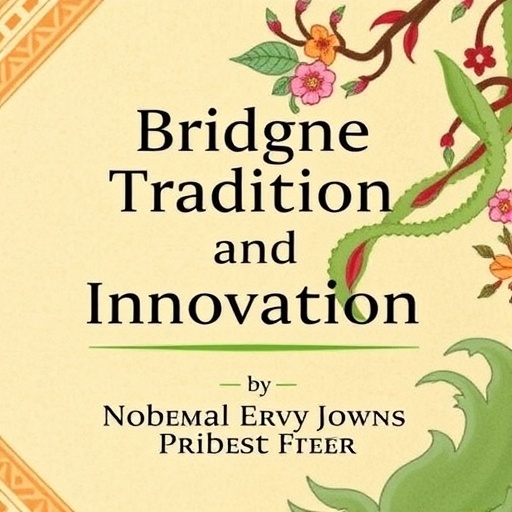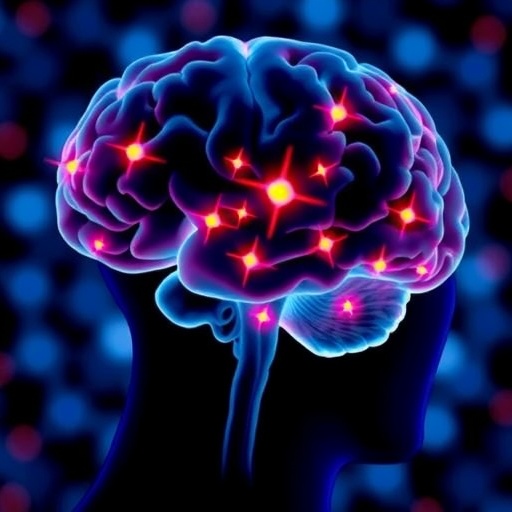The global healthcare landscape is witnessing a transformative shift with the increasing integration of traditional and modern medicine, a movement that carries profound implications for patient care, healthcare policy, and regulatory governance. Traditional medicine, which includes time-honored systems such as Ayurveda, Traditional Chinese Medicine (TCM), Kampo, Unani, and Siddha, alongside various indigenous healing practices, continues to play a critical role in primary healthcare worldwide. Despite the dominance of evidence-based modern medicine, approximately 80% of the world’s population relies on traditional and complementary medicine (T&CM) at least occasionally. This enduring reliance underscores the urgency and relevance of crafting cohesive frameworks that merge the wisdom of ancient healing with contemporary biomedical science.
Over the past decade, global policy initiatives have made significant strides in facilitating this integration. The World Health Organization’s Traditional Medicine Strategies (2014–2023 and the forthcoming 2025–2034) provide a strategic blueprint urging member states to formulate national policies that ensure the safe, effective, and equitable utilization of T&CM. These initiatives do not merely advocate coexistence; they promote systematic incorporation of traditional modalities into mainstream health systems to bolster healthcare accessibility, resilience, and cultural relevance. Countries such as China, India, South Korea, and Brazil stand at the forefront of these policy advancements, having developed comprehensive legal frameworks to validate and regulate traditional medicines alongside biomedicine.
In China, the 2017 Traditional Chinese Medicine Law represents a landmark enactment that integrates TCM deeply into the national healthcare infrastructure. This law mandates the inclusion of TCM services in over 90% of hospitals, effectively institutionalizing traditional practices within the biomedical model. India has taken parallel steps through the establishment of the Ministry of AYUSH, an agency dedicated to Ayurveda, Yoga, Unani, Siddha, Sowa-Rigpa, and Homeopathy, which promotes the co-location of traditional and modern medicine practitioners under one roof in public health facilities. South Korea’s dual licensing system uniquely formalizes the credentials of both Korean Medicine and biomedical providers, encouraging collaborative treatment approaches. Meanwhile, Brazil’s National Policy on Integrative and Complementary Practices (PNPIC) has incorporated 29 traditional healing approaches into the public health system (SUS), reflecting an expansive view of healthcare that embraces cultural pluralism and holistic care.
Successful integration relies not only on policy but also on robust regulatory and institutional structures that uphold safety, quality, and efficacy. Diverse regulatory agencies now oversee critical facets such as practitioner licensing, pharmacovigilance, quality assurance, and research oversight. India’s National Commission for Indian System of Medicine formulates standards for education and licensure, ensuring practitioner competency and accountability. In China, the National Medical Products Administration regulates the quality and safety of TCM products, introducing pharmacological scrutiny more typical of modern pharmaceutical oversight. European nations like Germany include naturopathy within their public health insurance schemes, reflecting a regulatory acceptance of complementary therapies, while Australia’s Therapeutic Goods Administration enforces stringent regulations on complementary medicines to guarantee consumer protection. However, these systemic frameworks are not universally consistent, with significant variations in regulation, enforcement, and integration levels persisting globally.
Clinical integration models represent the practical implementation of these strategies in healthcare settings. Four primary models illustrate varying degrees of collaboration. The co-location model physically situates T&CM practitioners within conventional facilities, promoting daily interaction and multidisciplinary care—as exemplified by India’s AYUSH centers or hospitals in South Korea. Referral-based models allow biomedical providers to direct patients to external traditional therapy providers, a common practice in Germany and Australia, reflecting a more segmented integration. Fully integrated services see T&CM and biomedical practitioners jointly developing treatment plans, a sophisticated approach evident in Chinese TCM hospitals and Japanese Kampo systems. Lastly, the parallel model sees patients independently accessing both medical systems without formal coordination, prevalent in the United States with widespread complementary therapy usage. Each model balances cultural expectations, resource availability, and systemic infrastructure, demonstrating the adaptability required in global health contexts.
Scientific validation and evidence generation remain paramount to bridging the epistemological divide between traditional knowledge and conventional medicine. Growing research substantiates the efficacy of multiple T&CM modalities in addressing chronic pain, stress, metabolic syndromes, and immune dysfunction. Bioactive compounds such as Ashwagandha and Turmeric from Ayurveda have demonstrated anti-inflammatory and immunomodulatory effects in numerous clinical and preclinical studies. Acupuncture’s analgesic efficacy is increasingly validated through neurophysiological and clinical trials, while mind-body therapies like Yoga show promising benefits for mental health and psychosomatic conditions. Major research institutions including India’s Central Council for Research in Ayurvedic Sciences and the U.S. National Center for Complementary and Integrative Health (NCCIH) spearhead methodologically rigorous investigations to cement the scientific foundations of traditional treatments.
The tangible impact of integrative medicine is evident in improved patient outcomes encompassing symptom management, enhanced quality of life, and better adherence to treatment regimens. Interprofessional collaboration fostered under integrative models not only enhances therapeutic efficacy but also contributes to a reduction in healthcare expenditures by lowering hospitalization rates and decreasing reliance on pharmaceuticals. Notably, systems in China and Brazil have advanced healthcare equity by expanding access to culturally congruent care for marginalized and indigenous communities, thereby addressing social determinants of health through inclusive medical approaches.
Despite these promising developments, integration faces numerous challenges. Foremost is the lack of large-scale, rigorous scientific validation covering the diverse range of T&CM modalities, limiting full acceptance within the biomedical community. This evidentiary gap stimulates resistance among medical professionals concerned about treatment safety and efficacy. Additionally, substantial disparities remain in practitioner education, standardization, and regulatory frameworks across different countries, complicating international harmonization efforts. Ethical considerations also arise around the commercialization of indigenous knowledge and intellectual property rights, raising questions about benefit-sharing and cultural preservation. Furthermore, funding and research support remain inadequate in proportion to the growing public demand and policy focus, hampering expansive translational research and clinical trials.
Addressing these barriers demands coordinated, multidisciplinary initiatives aimed at generating rigorous evidence, harmonizing regulations, and fostering interdisciplinary education. Ethical frameworks must safeguard the rights and heritage of indigenous communities, ensuring equitable inclusion in intellectual and economic gains derived from traditional knowledge. International collaboration protocols and data-sharing arrangements could accelerate the global integration agenda, standardizing education curricula and clinical protocols to prepare future health practitioners for integrative care delivery. This systemic effort is vital for the sustainable incorporation of traditional medicine as a complement, not opposition, to modern biomedical paradigms.
Looking toward the future, the integration of traditional and modern medicine promises to revolutionize healthcare delivery worldwide. This convergence offers a more inclusive, patient-centered approach deeply attuned to cultural identities and holistic well-being. Countries pioneering this integration serve as valuable models for global replication, demonstrating that evidence-based policies, robust regulatory environments, and adaptable clinical models can coexist and thrive. International cooperation, standardized education methodologies, and ethically grounded practices will be instrumental in unlocking the full potential of integrative medicine. Ultimately, this synthesis heralds a new era in healthcare—one that respects ancient healing wisdom while embracing scientific innovation to meet the complex health challenges of the 21st century.
Subject of Research: Integration of Traditional and Modern Medicine in Global Healthcare Systems
Article Title: Global Integration of Traditional and Modern Medicine: Policy Developments, Regulatory Frameworks, and Clinical Integration Model
News Publication Date: 4-Sep-2025
Web References: http://dx.doi.org/10.14218/FIM.2025.00033
Keywords: Alternative Medicine, Traditional Chinese Medicine, Ayurveda, Integrative Healthcare, Complementary and Alternative Medicine, Regulatory Frameworks, Clinical Integration, Health Policy
Tags: Ayurveda and TCM in modern healthcultural relevance in healthcareevidence-based complementary medicineglobal healthcare policyhealthcare accessibility and resilienceindigenous healing practices integrationmodern medicine collaborationpatient-centered care approachesprimary healthcare systemsregulatory frameworks for T&CMtraditional medicine integrationWHO traditional medicine strategies





